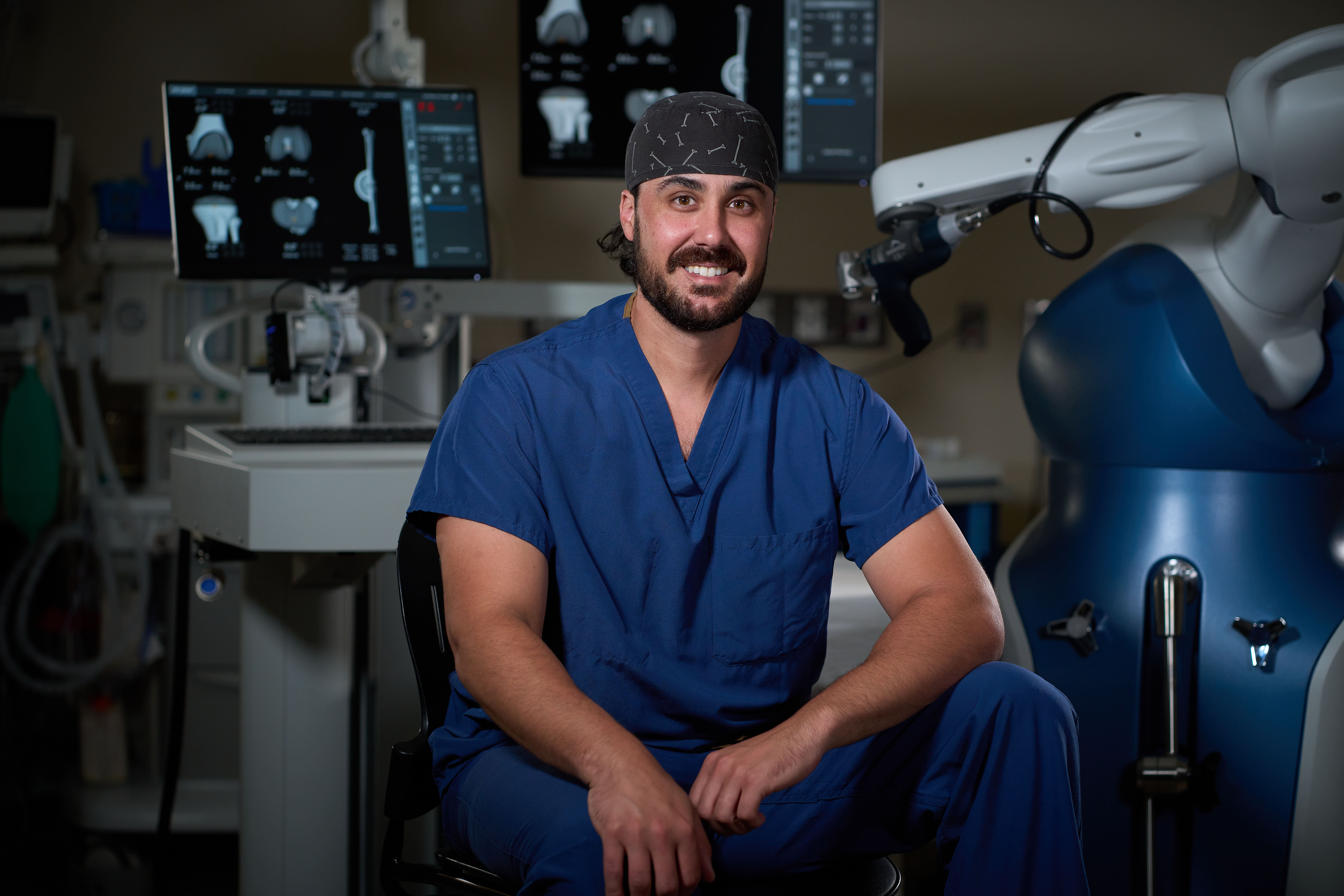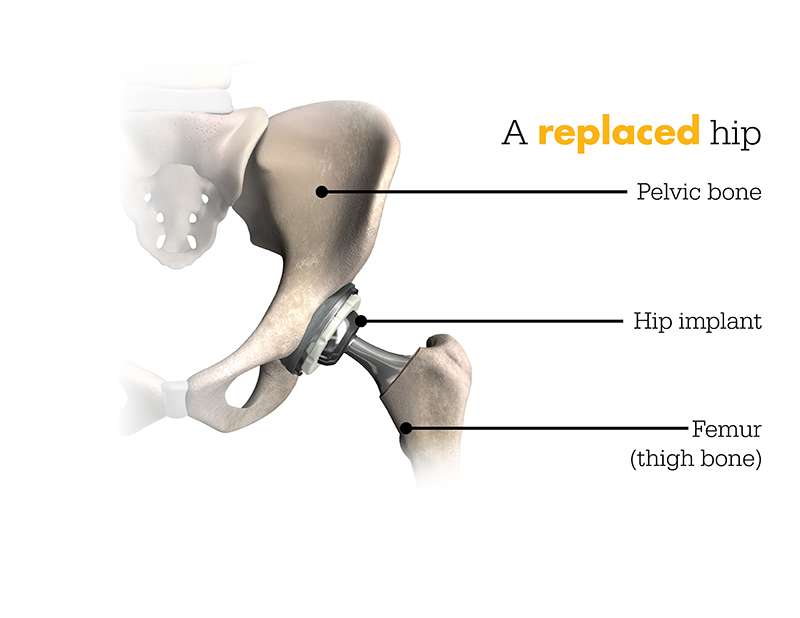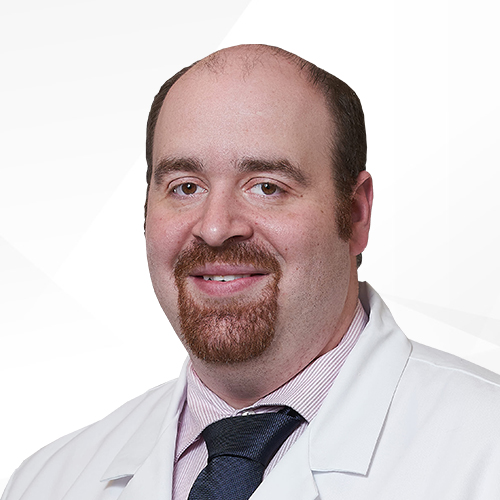Robotic & Computer Assisted Surgery

Dr. David Quinzi - SOS Robotic Joint Replacement Surgeon
Successful orthopedic surgery requires planning and precision. In collaboration with Crouse Hospital, St. Joseph's Hospital, and The Specialists' One-Day Surgery Center the SOS Robotics team is on the forefront of the most advanced robotic surgery in the nation. All of the surgeons on the SOS robotics team are fellowship trained and highly-trained in robotic joint replacement techniques. These robotic joint replacement techniques include, but are not necessarily limited to:
- Robotic knee replacement surgery
- Robotic hip replacement surgery
- Robotic partial knee replacement surgery
Advantage of Robotic Assisted Surgery Near Syracuse, NY
SOS orthopedic surgeons specialize in the latest, cutting-edge, robotic and computer-assisted surgical techniques for hip and knee replacement procedures.
In these procedures, evidence-based pain management and rapid recovery protocols are combined with robotic and computer-assisted surgical tools. Robotic tools make precise movements that preserve bone and tissue and often result in a faster recovery and less muscle and soft tissue damage. Computer-assisted surgery uses technology provides a more patient specific joint reconstruction.
Our focus on enhanced recovery and a personalized approach to pain management enables many of our patients to return home the same day of their robotic or computer-assisted surgery.
Robotic Hip Replacement Surgery
Syracuse Orthopedic Specialists' doctors use robotic hip replacement surgery to treat osteoarthritis, rheumatoid arthritis, developmental hip dysplasia, hip impingement syndrome, and conditions causing severe joint damage. The goal of the surgery is to relieve pain and improve mobility.

The most important factor in hip replacement surgery, in terms of pain, function, and recovery, is surgical technique. Precise surgical techniques that limit soft tissue damage are key to a rapid recovery. Accurate bone surface preparation with biomechanical restoration of the hip determines the function, comfort, and longevity of your implant. Robotic surgical techniques allow surgeons to remove only as much bone as is necessary. The robot system also ensures that the new replacement parts are aligned at the correct angles, which vary with every patient.
Hip replacement surgery requires a surgeon to remove damaged bone and cartilage and replace these with synthetic materials, which can affect limb length. Using robotic and computer-assisted tools helps restore your leg length and preserves your comfort and gait.
Robotic Knee Replacement Surgery
Total knee replacement or partial knee replacement is a common treatment for severe knee pain resulting from osteoarthritis, osteonecrosis, and rheumatoid arthritis. Partial knee replacements are a less invasive alternative for people who have experienced damage to one area of their knee as a result of arthritis.
Total or partial knee replacement surgery is a technically demanding surgery. Minor instability, common with traditional surgical techniques, has been recognized as a main source of patient dissatisfaction and early failure. Alignment and balance are the two main requirements for clinical success in knee replacement surgery.
Proper alignment requires precise surgical planning and execution, such as those that robotic techniques deliver.
Robotic Technology
SOS has access to the most advanced technology for robotic hip and knee replacement surgery including using Mako: a cutting-edge robotic joint replacement device.
Mako is an innovative solution for many suffering from painful arthritis of the knee or hip. It all starts with a CT scan so your surgeon can know more about your anatomy. The CT scan is used to create a 3D CT-based model of your joint. Your surgeon uses this 3D model to create a personalized surgical plan and assist your surgeon in performing your joint replacement procedure.
In the operating room, your surgeon follows your personalized surgical plan while preparing the bone for the implant. The surgeon guides Mako’s robotic arm within the predefined area, and Mako’s technology helps the surgeon stay within the planned boundaries that were defined when the personalized preoperative plan was created.
It’s important to understand that the surgery is performed by an orthopedic surgeon, who guides Mako’s robotic arm during the surgery to position the implant in the knee and hip joints. Mako does not perform surgery, make decisions on its own or move without the surgeon guiding it. Mako also allows your surgeon to make adjustments to your plan during surgery as needed.
Talk To Your Doctor About Robotic Assisted Joint Replacement Surgery
To see if robotic assisted surgery is best for you, schedule an appointment today.





